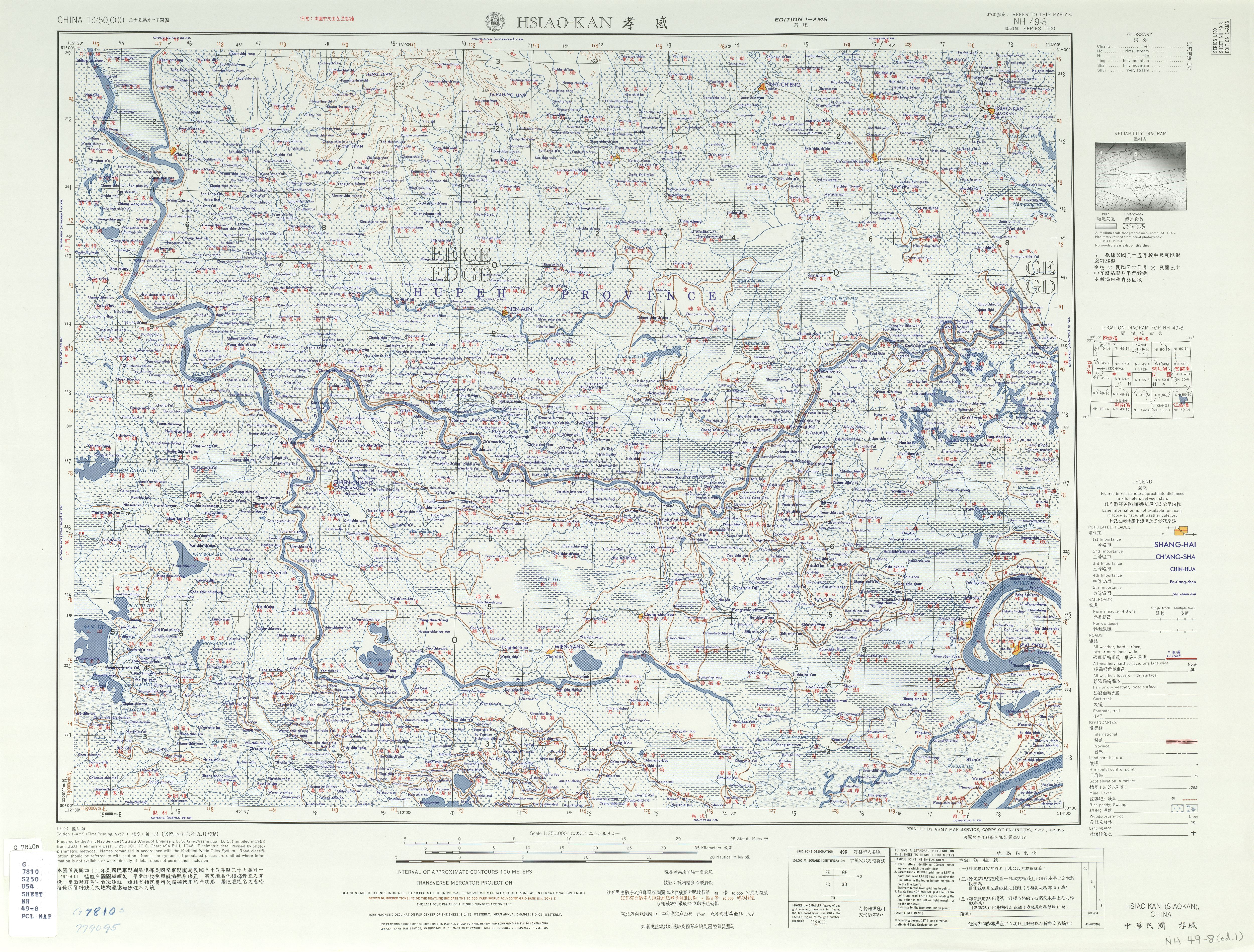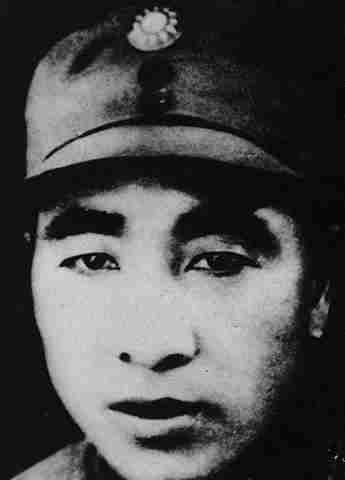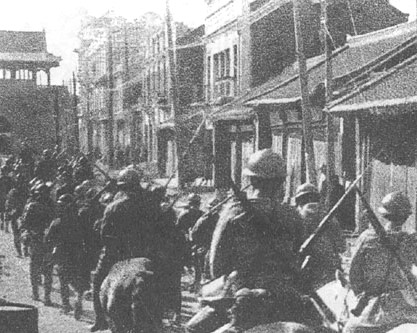|
Qianjiang, Hubei
Qianjiang ( zh, s= , t= , p=Qiánjiāng) is a sub-prefectural city of south-central Hubei Province, China. The city spans an area of , and has a population of 946,277 as of 2010. Toponymy Qianjiang's name means river diving, with the first character referring to qián shuǐ, the Chinese verb for diving, and the second character, jiāng, meaning river. History During the Spring and Autumn period and the Warring States period, the area belonged to the independent state of Chu. In the Three Kingdoms period, the area of present-day Qianjiang was part of the Eastern Wu. Portions of present-day Qianjiang were ruled by the Sui dynasty as part of . Part of Qianjiang was incorporated into the Tang dynasty as Jiangling County (). In 857 CE, the area was placed under the . During the Five Dynasties and Ten Kingdoms period, the area belonged to the independent kingdom of Jingnan. Qianjiang County () was first organized in 965 CE, during the Song dynasty. In 1293, during the Y ... [...More Info...] [...Related Items...] OR: [Wikipedia] [Google] [Baidu] |
Sub-prefectural City
A sub-prefectural municipality (), sub-prefectural city, or vice-prefectural municipality, is an unofficial designation for a type of administrative division of China. A sub-prefectural city is officially considered to be a county-level city, but it has more power ''de facto'' because the cadres assigned to its government are one half-level higher in rank than those of an "ordinary" county-level city—though still lower than those of a prefecture-level city. While county-level cities are under the administrative jurisdiction of prefecture-level divisions, sub-prefectural cities are often (but not always) administered directly by the provincial government, with no intervening prefecture level administration. Examples of sub-prefectural cities that does not belong to any prefecture: Jiyuan (Henan Province), Xiantao, Qianjiang and Tianmen (Hubei), Shihezi, Tumxuk, Aral, and Wujiaqu (Xinjiang). Examples of sub-prefectural cities that nevertheless belong to a prefecture: Golm ... [...More Info...] [...Related Items...] OR: [Wikipedia] [Google] [Baidu] |
Sui Dynasty
The Sui dynasty ( ) was a short-lived Dynasties of China, Chinese imperial dynasty that ruled from 581 to 618. The re-unification of China proper under the Sui brought the Northern and Southern dynasties era to a close, ending a prolonged period of political division since the War of the Eight Princes. The Sui endeavoured to rebuild the country, re-establishing and reforming many imperial institutions; in so doing, the Sui laid much of the foundation for the subsequent Tang dynasty, who after toppling the Sui would ultimately preside over golden ages of China, a new golden age in Chinese history. Often compared to the Qin dynasty (221–206 BC), the Sui likewise unified China after a prolonged period of division, undertook wide-ranging reforms and construction projects to consolidate state power, and collapsed after a brief period. The dynasty was founded by Emperor Wen of Sui, Yang Jian (Emperor Wen), who had been a member of the military aristocracy that had developed in ... [...More Info...] [...Related Items...] OR: [Wikipedia] [Google] [Baidu] |
Lin Biao
Lin Biao ( zh, 林彪; 5 December 1907 – 13 September 1971) was a Chinese politician and Marshal of the People's Republic of China who was pivotal in the Chinese Communist Party, Communist Chinese Communist Revolution, victory during the Chinese Civil War, especially in Northeast China from 1946 to 1949. Lin was the general who commanded the decisive Liaoshen campaign, Liaoshen and Pingjin campaigns, in which he co-led the Manchurian Field Army to victory and led the People's Liberation Army into Beijing. He crossed the Yangtze, Yangtze River in 1949, decisively defeated the Kuomintang and took control of the coastal provinces in Southeast China. He ranked third among the Yuan shuai#People's Republic of China, Ten Marshals. Zhu De and Peng Dehuai were considered senior to Lin, and Lin ranked directly ahead of He Long and Liu Bocheng. Lin abstained from taking an active role in politics after the war ceased in 1949. He led a section of the government's civil bureaucracy as one o ... [...More Info...] [...Related Items...] OR: [Wikipedia] [Google] [Baidu] |
Sino-Soviet Split
The Sino-Soviet split was the gradual worsening of relations between the People's Republic of China (PRC) and the Union of Soviet Socialist Republics (USSR) during the Cold War. This was primarily caused by divergences that arose from their different interpretations and practical applications of Marxism–Leninism, as influenced by their respective geopolitics during the Cold War of 1947–1991. In the late 1950s and early 1960s, Sino-Soviet debates about the interpretation of orthodox Marxism became specific disputes about the Soviet Union's policies of national de-Stalinization and international peaceful coexistence with the Western Bloc, which Chinese leader Mao Zedong decried as revisionism. Against that ideological background, China took a belligerent stance towards the Western world, and publicly rejected the Soviet Union's policy of peaceful coexistence between the Western Bloc and Eastern Bloc. In addition, Beijing resented the Soviet Union's growing ties with Indi ... [...More Info...] [...Related Items...] OR: [Wikipedia] [Google] [Baidu] |
Soviet Union
The Union of Soviet Socialist Republics. (USSR), commonly known as the Soviet Union, was a List of former transcontinental countries#Since 1700, transcontinental country that spanned much of Eurasia from 1922 until Dissolution of the Soviet Union, it dissolved in 1991. During its existence, it was the list of countries and dependencies by area, largest country by area, extending across Time in Russia, eleven time zones and sharing Geography of the Soviet Union#Borders and neighbors, borders with twelve countries, and the List of countries and dependencies by population, third-most populous country. An overall successor to the Russian Empire, it was nominally organized as a federal union of Republics of the Soviet Union, national republics, the largest and most populous of which was the Russian SFSR. In practice, Government of the Soviet Union, its government and Economy of the Soviet Union, economy were Soviet-type economic planning, highly centralized. As a one-party state go ... [...More Info...] [...Related Items...] OR: [Wikipedia] [Google] [Baidu] |
People's Republic Of China
China, officially the People's Republic of China (PRC), is a country in East Asia. With population of China, a population exceeding 1.4 billion, it is the list of countries by population (United Nations), second-most populous country after India, representing 17.4% of the world population. China spans the equivalent of five time zones and Borders of China, borders fourteen countries by land across an area of nearly , making it the list of countries and dependencies by area, third-largest country by land area. The country is divided into 33 Province-level divisions of China, province-level divisions: 22 provinces of China, provinces, 5 autonomous regions of China, autonomous regions, 4 direct-administered municipalities of China, municipalities, and 2 semi-autonomous special administrative regions. Beijing is the country's capital, while Shanghai is List of cities in China by population, its most populous city by urban area and largest financial center. Considered one of six ... [...More Info...] [...Related Items...] OR: [Wikipedia] [Google] [Baidu] |
People's Liberation Army
The People's Liberation Army (PLA) is the military of the Chinese Communist Party (CCP) and the People's Republic of China (PRC). It consists of four Military branch, services—People's Liberation Army Ground Force, Ground Force, People's Liberation Army Navy, Navy, People's Liberation Army Air Force, Air Force, and People's Liberation Army Rocket Force, Rocket Force—and four arms—People's Liberation Army Aerospace Force, Aerospace Force, People's Liberation Army Cyberspace Force, Cyberspace Force, People's Liberation Army Information Support Force, Information Support Force, and People's Liberation Army Joint Logistics Support Force, Joint Logistics Support Force. It is led by the Central Military Commission (China), Central Military Commission (CMC) with its Chairman of the Central Military Commission (China), chairman as Supreme Military Command of the People's Republic of China, commander-in-chief. The PLA can trace its origins during the Republic of China (1912– ... [...More Info...] [...Related Items...] OR: [Wikipedia] [Google] [Baidu] |
Second Sino-Japanese War
The Second Sino-Japanese War was fought between the Republic of China (1912–1949), Republic of China and the Empire of Japan between 1937 and 1945, following a period of war localized to Manchuria that started in 1931. It is considered part of World War II, and often regarded as the beginning of World WarII in Asia. It was the largest Asian war in the 20th century and has been described as The Asian Holocaust, in reference to the scale of Japanese war crimes against Chinese civilians. It is known in China as the War of Resistance against Japanese Aggression. On 18 September 1931, the Japanese staged the Mukden incident, a false flag event fabricated to justify their Japanese invasion of Manchuria, invasion of Manchuria and establishment of the puppet state of Manchukuo. This is sometimes marked as the beginning of the war. From 1931 to 1937, China and Japan engaged in skirmishes, including January 28 incident, in Shanghai and in Northern China. Chinese Nationalist and C ... [...More Info...] [...Related Items...] OR: [Wikipedia] [Google] [Baidu] |
Hunan–Hubei–Jiangxi Soviet
The Hunan–Hubei–Jiangxi Soviet () was a Comintern and local communist-led ''liberated zone'' in the 1930s south of the Yangtze River, comprising parts of counties in what are now the municipal regions of Yueyang in Hunan, Xianning in Hubei and, in Jiangxi, Jiujiang and Yichun. It was a constituent part of the territorially discontiguous and diplomatically unrecognised Chinese Soviet Republic (CSR). Before the declaration of the CSR in November 1931, the liberated zone had been known to Communists as the Hunan-Hubei-Jiangxi (Xiang-E-Gan) Revolutionary Base Area (湘鄂赣革命根据地). Embargo and menace The Right-Kuomintang (''Nationalist'') Government intended to destroy the Soviet by means of one of its broadly unsuccessful ''Encirclement'' campaigns. The Communist response is known as the Counter-Encirclement Campaign at the Hunan–Hubei–Jiangxi Soviet (or, since the action pre-dates the establishment of the CSR, the Counter-Encirclement Campaign at the Hunan-Hub ... [...More Info...] [...Related Items...] OR: [Wikipedia] [Google] [Baidu] |
Circuit (administrative Division)
A circuit ( or ) was a historical political division of China and is a historical and modern administrative unit in Japan. The primary level of administrative division of Korea under the Joseon and in modern North and South Korea employs the same Chinese character as the Chinese and Japanese divisions but, because of its relatively greater importance, is usually translated as province instead. China Circuits originated in China during the Han dynasty and were used as a lower-tier administrative division, comparable to the county (, also translated as "districts"). They were used only in the fringes of the empire, which were either inhabited primarily by non-Han Chinese peoples or too geographically isolated from the rest of the Han centers of power. The system fell into disuse after the collapse of the Western Jin dynasty. The administrative division was revived in 627 when Tang Emperor Taizong made it the highest level administrative division and subdivided China into ... [...More Info...] [...Related Items...] OR: [Wikipedia] [Google] [Baidu] |
Republic Of China (1912–1949)
The Republic of China (ROC) began on 1 January 1912 as a sovereign state in mainland China following the 1911 Revolution, which overthrew the Manchu people, Manchu-led Qing dynasty and ended China's imperial China, imperial history. From 1927, the Kuomintang (KMT) Northern expedition, reunified the country and initially ruled it as a one-party state with Nanjing as the national capital. In 1949, Nationalist government, the KMT-led government was defeated in the Chinese Civil War and lost control of the mainland to the Chinese Communist Party (CCP). The CCP Proclamation of the People's Republic of China, established the People's Republic of China (PRC) while the ROC was forced to Retreat of the government of the Republic of China to Taiwan, retreat to Taiwan; the ROC retains control over the Taiwan Area, and political status of Taiwan, its political status remains disputed. The ROC is recorded as a founding member of both the League of Nations and the United Nations, and previous ... [...More Info...] [...Related Items...] OR: [Wikipedia] [Google] [Baidu] |
Song Dynasty
The Song dynasty ( ) was an Dynasties of China, imperial dynasty of China that ruled from 960 to 1279. The dynasty was founded by Emperor Taizu of Song, who usurped the throne of the Later Zhou dynasty and went on to conquer the rest of the Five Dynasties and Ten Kingdoms period#Ten Kingdoms, Ten Kingdoms, ending the Five Dynasties and Ten Kingdoms period. The Song frequently came into conflict with the contemporaneous Liao dynasty, Liao, Western Xia and Jin dynasty (1115–1234), Jin dynasties in northern China. After retreating to southern China following attacks by the Jin dynasty, the Song was eventually conquered by the Mongol-led Yuan dynasty. The History of the Song dynasty, dynasty's history is divided into two periods: during the Northern Song (; 960–1127), the capital was in the northern city of Bianjing (now Kaifeng) and the dynasty controlled most of what is now East China. The #Southern Song, 1127–1279, Southern Song (; 1127–1279) comprise the period following ... [...More Info...] [...Related Items...] OR: [Wikipedia] [Google] [Baidu] |






